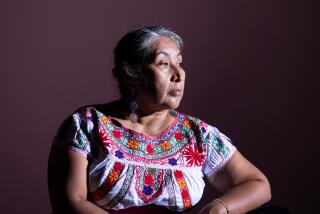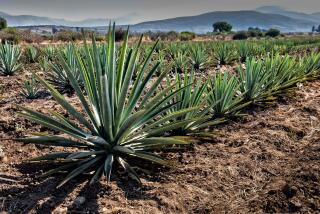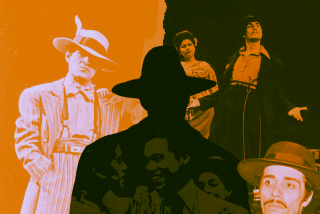‘Thread’ Interweaves Oaxacan Traditions
- Share via
The Mixtecs and Zapotecs were among the great peoples of pre-Columbian Mexico. They lived in what is today the state of Oaxaca, where Mexico’s Pacific Coast curves to face south. Today, despite conquistadors, colonialism and revolution, Mixtecs, Zapotecs and a melange of now-related groups survive in their homeland. They still practice customs and crafts that date back to at least 1500 BC. They are living history.
No wonder then that the Getty Conservation Institute took an interest in aiding these people in preserving one of their most intriguing and enduring products, their hand-woven textiles. Working with the state’s regional arm of Mexico’s Instituto Nacional de Antropologia e Historia, Getty conservators worked with local experts to save material that is as precious as it is ephemeral.
Results of the project are on view at the Southwest Museum in the exhibition “The Unbroken Thread: Conserving the Textile Traditions of Oaxaca.” Selected by Getty consultant Kathryn Klein, the show includes more than 40 examples of Oaxacan weaving.
But, if this art is based on the motifs and practices fixed in the past and weavers are still at their looms making new versions, why bother to preserve the old stuff? Well, because even though the tradition is unbroken, it is evolving.
The basic tool for making these designs remains the simple back-strap loom. Exhibition photographs show it in use. One end is attached to an upright post, the other to the weaver’s waist, rather like a hammock with no slack. This simple bit of ingenuity leaves the weaver with both hands free and quite a lot of latitude for movements like catching a wandering toddler.
*
The products of this device include sashes, shirts, pants, table runners and even samplers. Most often, however, the result is a traditional huipil, a unisex upper-body covering rather like a closed, short cape. Archeological evidence dates the garment back to pre-Columbian times as does the elegant simplicity of the basic structure. It consists of nothing more than two rectangular panels sewn together on three sides leaving openings for arms and head.
If all of this is as old as wearable cloth, other aspects are more modern. Today, although much Oaxacan weaving is still for local use, some villages weave exclusively for the tourist trade. Weavers use synthetic dyes, manufactured cotton, wool thread and pretty ribbons in shiny synthetic fabrics.
One of the major pleasures of the exhibition is quite dramatic local variation in design. The only thing missing is any sense that this work is done by rote. The material is either dramatic or delicate.
The northern community of Huautla de Jimenez is represented by a huipil in which a blazing white acts as a ground for big red brocade flowers that meet everybody’s expectations of bold Mexican folk art. Work from Guerrero, however, is wonderfully subtle and flirtatious in the way it sprinkles petal-like motifs in spring pastels.
Huipils from the northern Chinantec community of San Felipe Usila are multicolored in sonorous maroons and lavenders looped and striped with appliqued ribbons. By contrast the east-central enclave of San Juan Cotzocon is represented by intricately textured white-on-white brocades. Dated around 1940, a label informs us this is a form no longer practiced. Evidently, factors ranging from the availability of materials to the skills of individual weavers cause certain configurations to become obsolete.
*
* Southwest Museum, 234 Museum Drive, to Feb. 1, closed Mondays and major holidays, (213) 221-2164.


